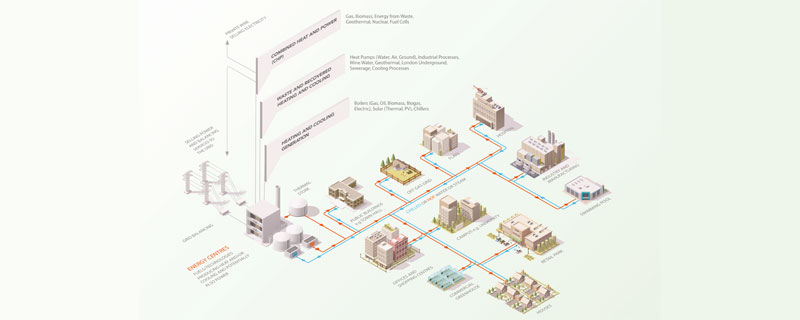Delivery manager for Heat Networks Investment Project says planned introduction of new government powers to prioritise district heat in certain areas of England will be a “game changer”
Construction on the first batch of heat network zones that would prioritise the use of district heating across specific parts of England could begin by 2025.
Experts argue that these zones would be a significant boost for plans to encourage the use of low carbon heat networks up to 2050 as part of national decarbonisation plans.
Proposals are currently being considered in parliament as part of a new Energy Bill that would grant the government new powers to create these zones, if passed into law.
David Lee, the scheme delivery manager for the Heat Networks Investment Project with the Department for Energy Security and Net Zero, said he expected the legislative reforms around heat network zoning set out in bill would be a “game changer” if implemented.
Mr Lee said he believed that the induction of zoning, as opposed to the development of any specific type of district heating innovation, was going to be significant factor in meeting current targets for expanding the number of networks in operation.
The Energy Bill proposals, which are currently under parliamentary review, would establish a methodology for defining certain types of areas in England that should prioritise district heating connections as a preferred option to decarbonise heat demand.
The bill also backs providing the government with the power to establish a ‘zoning coordinator’ to designate a heat network zone and enforce use of district heating solutions in these areas. Local government bodies are anticipated to fulfil the majority of these coordinator roles under the bill.
Mr Lee said that the bill also established Ofgem as a regulator for heat networks standards and pricing, along with introducing the statutory powers to implement zoning.
According to the government’s own estimates, around two per cent of heat demand is currently provided though heat networks. However, it expects that close to a fifth of national demand for low carbon heat could be met by a new generation of district heating solutions and retrofits of existing systems by 2050, citing estimates from the Climate Change Committee (CCC).
Heat network zoning was described by Mr Lee as the process to identify areas where district solutions were identified as the lowest cost option to decarbonise heat at scale.
He expected further consultations to be launched going forward around the secondary legislation that would be needed to define the best process for zoning. This would in turn lead to the formation of the first zones for England being built potentially within two years.
Mr Lee said: “There is work underway to ensure that a batch of zones are under construction by the end of 2025.”
The comments were made during a workshop event hosted by manufacturing specialist Rehau this week in London to consider how to ensure the construction and operation of high quality and low carbon heat networks.
Among the day’s speakers were Dr Gabriel Gallagher of the Sustainable Energy consultancy. Dr Gallagher that heat networks offered a growing potential for city authorities and developers to more closely integrate renewable sources of power to meet heating demand in building and business.
He said that future projects would be able to look at the use of lower carbon technologies such as heat pumps that can connect to a network that makes use of wastewater and other sources of energy.
He also presented different examples of projects that could make use of nearby energy sources to provide heating to numerous buildings. This included a project in Cardiff to capture heat provided from waste that could then be used to supply buildings in the Cardiff Bay area of the city.
There was also potential for lower scale use of networks, such as in proposed garden villages that set to be built across the UK.
Dr Gallagher said that an investigation on such project had identified the potential to provide heating to homes through a network taking heat from nearby coal mine workings.
Simon Eddleston, director of construction at district heating supplier Switch2 Energy, agreed that crucial changes were presently underway around planning and funding for heat networks that would help drive market expansion.
“As you see this change, you will also see a basic realisation that this is a technology that can decarbonise large chunks of housing in one go.”
“It’s probably the most vital technology in that way. So I think you will see the level of understanding about them change.”
Source: H & V News







Leave a Reply
Want to join the discussion?Feel free to contribute!